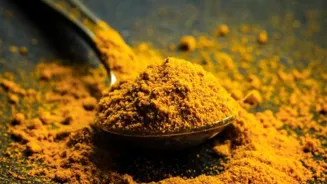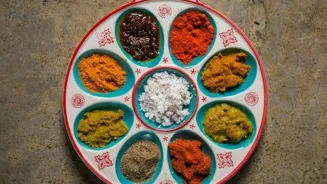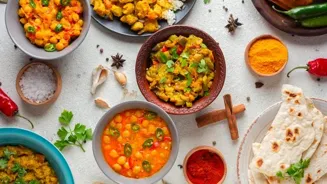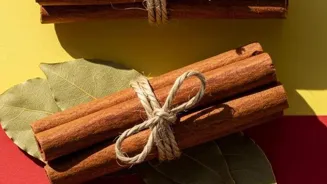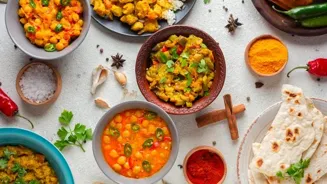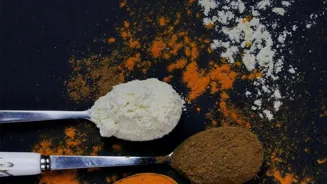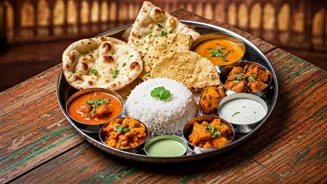Discover the essence of Indian cuisine with these 10 essential ingredients. Unveil the secrets of vibrant flavors!
For those keen to recreate the vibrant flavors of India in their own kitchens, mastering
a few key ingredients is the secret recipe. Forget complicated techniques; a well-stocked pantry brimming with these essentials will bring authentic Indian taste right to your table.
From the earthy warmth of turmeric to the aromatic punch of ginger and garlic, let's unveil the ten indispensable ingredients that form the foundation of delicious Indian cooking. These are not just spices; they are the building blocks of a culinary adventure!
The Golden Spice: Turmeric (Haldi)
Turmeric, known as "haldi" in Hindi, is arguably the most recognizable spice in Indian cooking. Its vibrant yellow color and earthy, slightly bitter flavor are instantly associated with the subcontinent's cuisine.
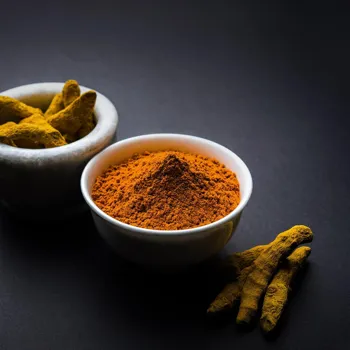
More than just a coloring agent, turmeric boasts significant anti-inflammatory and antioxidant properties, making it a staple in Ayurvedic medicine. From adding a warm hue to lentil-based dals to lending its distinctive taste to vegetable curries and rice dishes, turmeric is a versatile essential.
A pinch of turmeric is considered auspicious and is regularly included for good health.
The Aromatic Duo: Ginger and Garlic
Ginger and garlic are truly inseparable partners in Indian cuisine. They form the aromatic base for countless curries, gravies, and stir-fries. Ginger, with its pungent and slightly spicy flavor, adds warmth and depth, while garlic brings a savory, slightly sweet note.

The combination of freshly grated ginger and garlic paste, often referred to as "adrak-lahsun paste," is a foundational element in most Indian recipes. These ingredients are also celebrated for their medicinal properties, aiding digestion and boosting immunity.
Experiment with different ratios to find your preferred balance of flavor magic.
The Scented Queen: Cardamom (Elaichi)
Cardamom, or "elaichi," reigns supreme as the queen of Indian spices. Its intensely aromatic flavor, with notes of citrus and mint, elevates both sweet and savory dishes. Green cardamom pods are the most common variety, imparting a fragrant sweetness to desserts like kheer and lassi.
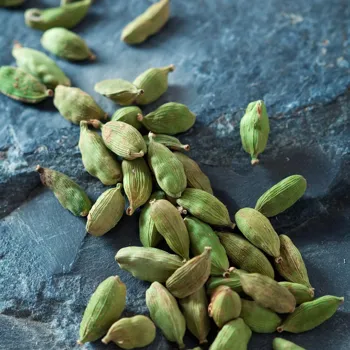
Black cardamom, with its smoky and robust flavor, is often used in hearty stews and biryanis. A pinch of cardamom powder can transform a simple cup of chai into a fragrant delight. Remember to gently crush the pods to release their aroma before adding them to your recipes.
The Mustardy Zing: Mustard Seeds (Rai)
Mustard seeds, or "rai," are tiny powerhouses of flavor that add a distinctive piquancy to Indian dishes. Black mustard seeds are the most common, with a slightly bitter and pungent taste. The seeds are often tempered in hot oil, causing them to pop and release their aromatic compounds.
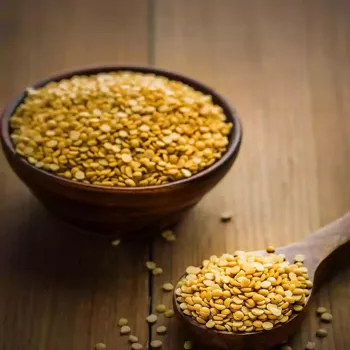
This "tadka" technique is a hallmark of Indian cooking, adding a layer of complexity and depth to dishes. Mustard seeds are essential in South Indian cuisine, particularly in dishes like sambar and uttapam, but they also find their place in North Indian pickles and chutneys.
The Tangy Star: Tamarind (Imli)
Tamarind, or "imli," lends a unique sweet and sour flavor to Indian cuisine. The pulp of the tamarind fruit is used to create a tangy paste or concentrate, which is then added to dishes like sambar, rasam, and chutneys.
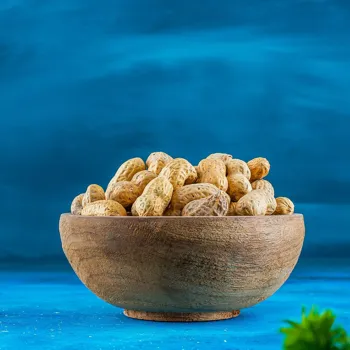
Tamarind's acidity balances the richness of other ingredients, creating a harmonious flavor profile. It is also a natural tenderizer, making it ideal for marinating vegetables. Consider using tamarind for a unique twist in your next curry or a refreshing summer drink.
The Fiery Touch: Chillies (Mirch)
Chillies, or "mirch," are indispensable for adding heat and complexity to Indian cuisine. From mild Kashmiri chillies to fiery ghost peppers, the variety of chillies available is staggering.
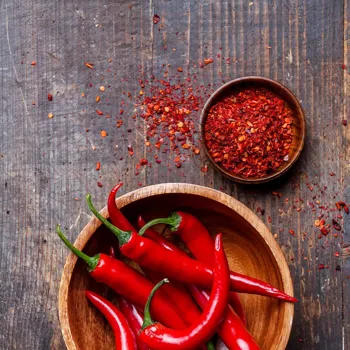
Different chillies impart different levels of heat and flavor, allowing you to customize your dishes to your preferred spice level. Chilli powder, made from ground dried chillies, is a staple ingredient in many Indian recipes.
Fresh green chillies, finely chopped or slit, are also used to add a vibrant burst of heat and flavor.
The Earthy Power: Cumin (Jeera)
Cumin, or "jeera," is an earthy and aromatic spice that is widely used in Indian cooking. Whole cumin seeds are often tempered in hot oil to release their fragrance, while ground cumin powder is added to curries and spice blends.
Cumin lends a warm and slightly bitter flavor to dishes, complementing other spices like coriander and turmeric. It is also believed to have digestive properties, making it a common ingredient in traditional Indian remedies. Roast the cumin seeds lightly before grinding to enhance their flavor.
The Aromatic Leaf: Coriander (Dhaniya)
Coriander, or "dhaniya," is a versatile herb that is used both as a spice (coriander seeds) and as a garnish (fresh coriander leaves). Coriander seeds have a warm and citrusy flavor, while fresh coriander leaves add a bright and refreshing note to dishes.
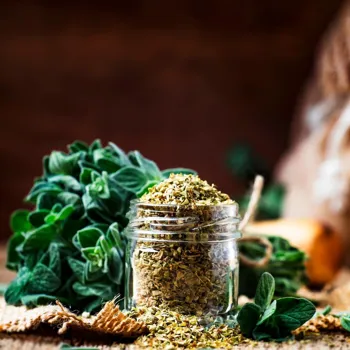
Ground coriander powder is a staple ingredient in many Indian curries and spice blends. Fresh coriander leaves are often sprinkled on top of dishes just before serving, adding a pop of color and flavor.
The Essential Pulse: Lentils (Dal)
Lentils, or "dal," are a cornerstone of Indian vegetarian cuisine. These protein-rich legumes are used to create a wide variety of dishes, from simple lentil soups to creamy and flavorful dals.
Different types of lentils, such as red lentils (masoor dal), yellow lentils (toor dal), and black lentils (urad dal), have unique textures and flavors. Dal is not only a nutritious and satisfying meal but also a versatile canvas for experimenting with different spices and flavor combinations.
The Neutral Base: Vegetable Oil or Ghee
While seemingly simple, the cooking medium plays a crucial role in the overall flavor of Indian dishes. Vegetable oil, being neutral in flavor, allows the spices to shine through. Ghee, or clarified butter, adds a rich and nutty flavor to dishes.
The choice between vegetable oil and ghee depends on personal preference and the specific recipe. Some recipes call for ghee to enhance the richness, while others prefer vegetable oil to allow the spices to be the star.
